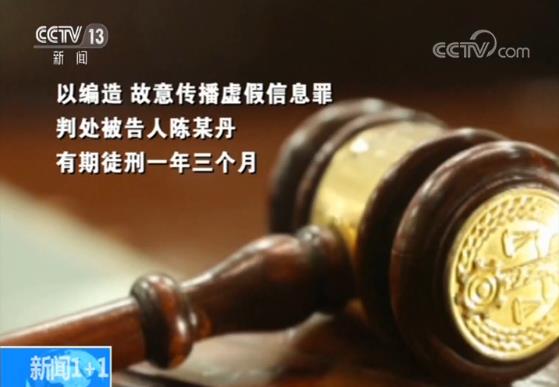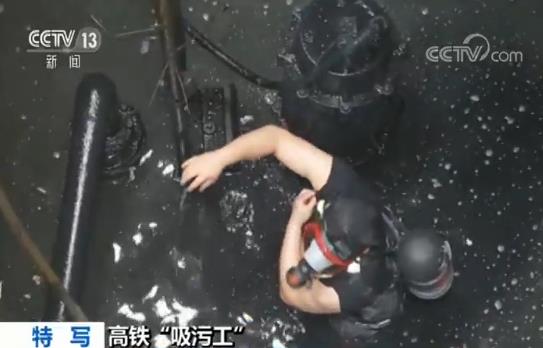Wen | Lei Technology leitech
On the evening of April 22nd, Nezha Auto officially released the Nezha L. At the press conference, Zhou Hongyi appeared at the scene as a guest and made a speech. Zhou Hongyi’s appearance at the Nezha conference is not surprising in itself. In 2021, 360 announced that it would cooperate with Nezha Automobile to build a car, and took out 2.9 billion yuan to become the second largest shareholder in Nezha.However, at the launch of the new car, Zhou Hongyi also teased Zhang Yong, CEO of Nezha Automobile, asking him to learn from Lei Jun and think about how Lei Jun would talk about products.
Zhou Hongyi said this, obviously not "long ambition of others, destroy yourself down a peg or two" so simple. As early as March this year, Zhou Hongyi said that Nezha Automobile had problems in marketing and product planning, and should learn from Xiaomi, especially Lei Jun.. Recently, Zhou Hongyi also issued a document saying that he was rejected when he asked Lei Jun for Xiaomi SU7 experience recently. Two days ago, Zhou Hongyi even "sharply commented" on the rumor that an employee of a car company was fired for buying a Xiaomi car, saying that the company should encourage him instead of firing him.
Zhou Hongyi frequently cue Xiaomi Automobile and Lei Jun, taking them as positive cases for learning. Obviously, the core purpose is not to advertise Xiaomi, but to take the opportunity to take advantage of the "sky-splashing" traffic of Xiaomi Automobile, at least using the influence of themselves and Xiaomi to drive users to pay attention to Nezha Automobile.After all, since the release of Xiaomi Auto, the degree of topic discussion has exploded directly, and Xiaomi’s ability to bring its own traffic has once again appeared. Moreover, Xiaomi Automobile’s first sale was successful and it was on the rise. In contrast, Nezha Auto emphasizes cost performance, but there is still much room for improvement in sales and revenue in recent years.
However, what many people may not know is that the relationship between Zhou Hongyi and Lei Jun is far more complicated than expected. They have known each other for nearly 30 years. They used to be close friends, and they also made enemies several times because of business competition. In addition to fighting with each other on the Internet, they even came close to offline fights and physical fights.
The 30-year history of feud between Zhou Hongyi and Lei Jun spans many fields, such as Internet, mobile phones, intelligent hardware, new energy vehicles, etc., and reflects the development of science and technology and the Internet in China.
As we all know, Lei Jun is a native of Xiantao, Hubei Province, and graduated from Wuhan University. Coincidentally, Zhou Hongyi is also a native of Hubei, from Huanggang, the hometown of the secret papers of college entrance examination, and graduated from Xi ‘an Jiaotong University. They are all computer majors in college, and they are only one year apart. However, their first acquaintance will have to wait until 1995.
In 1995, Zhou Hongyi, a graduate student, worked for Founder Group as an engineer. Lei Jun, who has been in Jinshan for three years, was the general manager of Beijing Jinshan Software Company at that time under the appreciation and promotion of Qiu Bojun. At that time, their wives both worked in Founder, so they met and became friends. In fact, in the first decade after Zhou Hongyi and Lei Jun met, their relationship was close, and they often had dinner and drinks together. But when conflicts of interest arise, the boat of friendship will turn over.
In 2006, Zhou Hongyi founded Qihoo 360, released 360 security guards, and started a new style of 360 free antivirus software. People who have experienced the PC Internet era will definitely remember the "3Q War" of that year. At that time, 360 and Tencent had a conflict because of the competition in the field of security software. In 2010, an open letter published by QQ containing the word "difficult decision" and asking users to choose one or the other pushed this conflict to a climax. The reason why this war attracted attention was that QQ and 360 security guards were all national PC software at that time.
In fact, before the "3Q War", 360 and Jinshan had already had conflicts. When the model of 360 free soft killing was opened, the first thing that was affected was Jinshan’s fee soft killing. To this end, Lei Jun, who had already left Jinshan, returned again and gave Kingsoft Internet Security free of charge. If things stop here, then the contradiction between Zhou Hongyi and Lei Jun can still stay in the ordinary business competition.However, there is a key episode in this. While Kingsoft makes drug tyrants free, it also integrates killing soft cows.
The founder of Ke Niu is Fu Sheng, a former subordinate of Zhou Hongyi. Fu Sheng was Zhou Hongyi’s right-hand man. He joined 3721 founded by Zhou Hongyi in 2003 and Qihoo in 2005, and served as the development director of 360 security guards. However, with Fu Sheng’s resignation and his second venture, the contradiction between him and Zhou Hongyi suddenly arose. In October, 2010, Fu Sheng’s image of Cow Virus and Cow Virus was removed from the 360 Software Manager. Less than a month later, Jinshan Security and Keniu Company announced the merger of Jinshan Network Company, with Fu Sheng as CEO.
In the past, the "rebel general" actually became Lei Jun’s right-hand man, and directly competed with 360′ s key business. Zhou Hongyi, who had a bad temper, naturally had no friendship in the past when facing Lei Jun, and their relationship also took a turn for the worse. In 2011, Qihoo 360 also appealed to court to sue Fu Sheng. The allegations included stealing trade secrets, breaking the agreement and digging people.
However, 360 has long been deeply rooted in the field of PC security software, and its early free play has already made it an unshakable advantage. According to Xiaolei’s feeling in those days, the installation rate of 360 security guards is higher, and the experience is better than Kingsoft Internet Security. According to 360 official data, the market coverage of 360 antivirus software exceeded 51% in 2010. In the heyday of PC Internet, Zhou Hongyi is undoubtedly the trendsetter standing at the top of the tide.
In contrast, Lei Jun, who became famous for his office software and became the helm of Jinshan early, was a frustrated person on the Internet at that time. Lei Jun founded Joyo as early as the Millennium and became the pioneer of domestic e-commerce platform. Joyo was acquired by Amazon in 2004, and Lei Jun and Jinshan withdrew from the management team. Subsequently, in the PC security software war, Lei Jun also failed to win.
However, once the heyday is over, the PC Internet era will inevitably weaken. PC will no longer be the core product of the Internet, but smart phones, and the tide of mobile Internet is coming. At that time, Zhou Hongyi and Lei Jun will meet again, and the battlefield will shift from PC Internet to mobile phone position.
In 2007, the first generation of iPhone was released, followed by Google’s joint research and development of Android products with mobile phone brands, and the era of touch-screen smart phones came. In 2010, Lei Jun, who had already left Jinshan, founded Xiaomi and released Xiaomi mobile phone the following year. Since then, Xiaomi has rapidly grown into an important force in the smart phone market, posing a threat to traditional brands. Zhou Hongyi, who grew up in the era of PC Internet, naturally didn’t want to miss the popularity of smart phones and mobile Internet. He soon ended up and once again set off a feud with Lei Jun..
In 2012, Qihoo 360 established the brand 360 mobile phone, and in the same year, it released the 360 special machine with Huawei — — Huawei shines. This phone supports dual card dual standby, equipped with a 4.3-inch screen, 1GHz dual-core processor, 1GB internal and 4GB flash memory, and priced at 1499 yuan. 360 has given full play to this product in publicity, and even called it "the most cost-effective smartphone at present" on Weibo. Under these moves, 360 clearly pointed the finger at Xiaomi.
At that time, Xiaomi’s label was cost-effective. Moreover, when the 360 special machine was released, the Xiaomi mobile phone youth version was also sold at the same time, and the pricing was also 1499 yuan. Li Wanqiang, the core marketing figure of Xiaomi’s mobile phone, directly hinted at Weibo that the main frequency of 360 mobile phone processor is only 1GHz, and its cost performance is not as good as Xiaomi’s. Zhou Hongyi, on the other hand, made a tit-for-tat attack on Weibo, criticizing Xiaomi 1′ s Youth Edition processor for using the old architecture, which is not as good as the new architecture of 360 special machine chips.
The confrontation between Zhou Hongyi and Li Wanqiang was only an appetizer, and the fierce struggle between Zhou Hongyi and Lei Jun later pushed the "Little Three Wars" to the climax. Lei Jun directly called Zhou Hongyi "Dong Fangbubai" and accused 360 of using plagiarism to make mobile phones. Zhou Hongyi retorted, calling Lei Jun a "thunderbolt" and accusing Xiaomi of stealing his mobile phone from Meizu. The battle between the two attracted a lot of traffic on the internet, and countless people ate melons to watch. Moreover, many netizens don’t think it’s too big to watch the excitement, but also keep on arching the fire.
Finally, the situation escalated further. Zhou Hongyi said at the Weibo that he would make an appointment with Lei Jun, and the location was set at the east gate of Chaoyang Park, and Lei Jun actually took up the battle.Xiaomi’s official authorized biography "Walk the Line" mentioned that after accepting the invitation, Lei Jun asked Li Wanqiang and several employees to step on the spot in Chaoyang Park, and even planned the evacuation route.
Of course, the frame-appointment incident was finally dropped, but for a long time, 360 mobile phones regarded Xiaomi as an important opponent. At the beginning of the release of Xiaomi mobile phone, Lei Jun often emphasized the concept of Internet mobile phone, that is, hardware is just a carrier, and it is necessary to make money through Internet content. Zhou Hongyi, who pioneered free soft killing with 360, naturally knows this. Zhou Hongyi’s strategy of making smart phones is more radical, and even put forward the idea of free mobile phones, which only uses Internet content to make profits.
However, the 360 mobile phone finally failed to be as successful as Xiaomi. The 360 special machine has also cooperated with Alcatel, Haier and Amoi, but the results are relatively average. Until 2014, 360 and Coolpad reached a cooperation, jointly established Qiku, and successively released their own 360 mobile phones. But no one expected that the cooperation between 360 and Coolpad would eventually tear apart dramatically. In 2015, Coolpad announced its participation in LeTV Eco, and Zhou Hongyi was furious and bombarded Coolpad on the Internet. Finally, Zhou Hongyi and 360 mastered the control of Qikuo mobile phone. Unfortunately, at that time, the overall situation of the mobile phone market was set, and 360 had no chance.
In 2019, the 360 mobile phone business officially stopped. Just two years ago, LeTV, which once enjoyed unlimited scenery, had a financial crisis and withdrew from the mobile phone market. Zhou Hongyi’s old rival Coolpad was also implicated and faded out of the mobile phone industry. Judging from the results, Lei Jun and Xiaomi had the last laugh, and 360 and Zhou Hongyi failed in the mobile phone war after all.
Zhou Hongyi plunged into the mobile phone industry, mainly because he saw the general trend, and everyone was trying to seize the entrance of the mobile Internet. With the decline of the importance of PC Internet and the substantial improvement of the native security of Windows operating system, the space left for PC security software activities is getting smaller and smaller. How to extend the advantages of 360 PC era to smart phones is the most concerned issue for Zhou Hongyi. Whether it is to build a special machine jointly with other mobile phone brands or to make a self-owned brand product in person, it is all around this goal.
However, from the point of view of Monday morning quarterback, compared with Xiaomi, 360 mobile phone lacked a clear direction at first, the selected partner fell off the chain, and the product itself was not competitive enough. 360 mobile phones have hardly launched flagship products, and the long-term main products are partial entry products of around 1,000 yuan. Zhou Hongyi is obsessed with Internet content to make profits, ignoring the importance of the hardware itself, which may be the essential reason why 360 mobile phone products are not strong enough.
Although Xiaomi is a new player in the mobile phone industry, every step has gone smoothly and solidly. In 2010, MIUI first attracted and cultivated fans as a third-party ROM, and verified the value of the third-party customization system. With the word-of-mouth accumulated by MIUI and the rock-breaking cost performance of Xiaomi’s mobile phone at that time, Xiaomi successfully opened the situation in the mobile phone market.
In the era of mobile Internet, the confrontation between Zhou Hongyi and Lei Jun was equally fierce, and it was even more savage. In addition to the confrontation in Weibo, it even reached the point where it was offline. In this mobile phone war, Lei Jun pulled back a game. It should be noted that in the "Little 3 War", Xiaomi’s mobile phone was dominant from beginning to end, and 360 and Zhou Hongyi took the initiative to fight Xiaomi, essentially for the purpose of maximizing traffic. Of course, the "Little Three Wars" brought a lot of traffic to both brands, and Li Wanqiang later admitted that this incident objectively increased the brand voice of Xiaomi.
The wave of intelligence has not only completely changed the mobile phone industry, but also impacted other traditional markets and spawned new industries. In 2012, Xiaomi released the first TV box and brought the first smart TV a year later. Since then, Xiaomi has quickly opened its layout in the field of smart home. In 2016, the Mijia brand was established, and the name of Xiaomi grocery store started in an all-round way. A series of smart home appliances such as rice cookers, patch panels, electric fans, air conditioners and table lamps followed.
Xiaomi’s IoT strategy is undoubtedly successful. It recreates the successful model of Xiaomi’s mobile phone, and quickly breaks through in the corresponding segmentation field with countless cost-effective smart items, plus Xiaomi’s own traffic bonus and brand appeal. The multi-point outbreak of play has made Xiaomi’s IoT business grow rapidly.Judging from the latest financial report, Xiaomi’s IoT business in 2023 has brought in more than 80 billion yuan in revenue, which is second only to the mobile phone business.
Many of Mijia’s various hardware products are handled by Xiaomi Eco-chain enterprises, and Xiaomi and Lei Jun are not directly responsible. In addition to the first rice cooker and the first TV release, Lei Jun will personally stand on the platform, and most of the intelligent hardware-related businesses, Lei Jun has found the right-hand man who is good at it. For example, Liu De has been at the helm of Xiaomi’s ecological chain for a long time, and Wang Chuan has been leading the TV business until he left office.
360 and Zhou Hongyi also have a keen sense of smart hardware. In 2013, 360 released a 360 portable WiFi wireless router, which quickly exploded with its low price and easy use, and quickly became an explosion, causing many brands to follow suit. Since then, 360 has successively launched routers, cameras, water purifiers, children’s watches, sweeping robots and other products.
360′ s intelligent hardware products combine their own characteristics, and take security as a big selling point, such as 360′ s secure routing and 360′ s lost guard. However, Zhou Hongyi’s attitude towards this kind of products seems to be somewhat indecisive. 360 Secure Routing was discontinued a few months after it went on the market, and 360 Anti-Lost Defender has never been officially put on sale.
Fortunately, 360′ s intelligent hardware business has gradually combed out a clearer product line after sustained development. 360 named the whole business section "360 Smart Life", which is divided into security camera, smart life (smart door lock), child safety (children’s watch), driving safety (driving recorder) and visual big model (360 visual cloud, commercial digital intelligence platform).Obviously, 360 regards security as the most distinctive label of its own intelligent hardware business, and this is also its best ability. Today, intelligent hardware has become an important business of 360, and its revenue contribution is second only to Internet advertising and service business.
However, the overall volume of 360 intelligent hardware can certainly not be compared with Xiaomi. Moreover, compared with Xiaomi, 360′ s intelligent hardware product line lacks such a key entrance as mobile phone, and it is difficult to form a huge ecological circle.
Compared with the arrogance of PC Internet and smart phone era, in the battlefield of intelligent hardware, 360 and Xiaomi did not actually have too many conflicts. On the one hand, the intelligent hardware business is not an order of magnitude, and the emphasis is different, which does not produce fierce competition; On the other hand, intelligent hardware is not the core business of 360 or Xiaomi, and neither Zhou Hongyi nor Lei Jun has the motivation to fight directly.
In fact, since the 360 mobile phone business fell into a downturn, the contradiction between Zhou Hongyi and Lei Jun no longer exists, and their relationship is gradually easing. At the Internet conference in 2016, they sat side by side, talking and laughing, and teased the photo of Zhou Hongyi who was asleep when Lei Jun "glared" at the last Internet conference.
After smart phones, the next wave of intelligence is undoubtedly smart cars. In recent years, the car-making craze in the whole industry is easily reminiscent of the mobile phone craze of that year. For new energy vehicles, Zhou Hongyi and Lei Jun entered the venue almost at the same time.In 2021, Xiaomi registered the trademark of Xiaomi Automobile, and established Xiaomi Automobile Company, and started the factory construction to speed up the progress of building cars. In the same year, 360 took a stake in Nezha Automobile, and announced an investment of 2.9 billion yuan to participate in the car-making army in a more indirect way.
Like an inescapable fate, Zhou Hongyi and Lei Jun seem to be on the opposite side again. However, this time, the two men did not stage a tearing war again, but they were a little more polite to each other. As we said at the beginning, after Xiaomi went public, Zhou Hongyi repeatedly cued Xiaomi and Lei Jun on social media and public occasions, showing the attitude that Xiaomi is very good and Lei Jun is worth learning. Of course, there is a purpose to drain Nezha’s cars, and perhaps there is something from the heart. After all, looking at it now, Lei Jun is indeed more successful in starting a business and making products.
In his early years, Zhou Hongyi was known as the "cannon in red" and was famous on the Internet for his hot temper and strong aggression. His strong personality and frequent firing style made him frequently make enemies in the industry, and Lei Jun was just one of his many "old enemies". However, after 2016, Zhou Hongyi has changed a lot, and the number of firing guns has been greatly reduced. The news of reconciliation with other scientific and technological tycoons is frequently seen on the Internet.
In 2018, Zhou Hongyi took a public photo with Li Yanhong who had a war of words; In 2019, Zhou Hongyi publicly praised Ma Yun and Ren Zhengfei for their management ability, saying that they were the objects of their worship. For former sworn enemies Ma Huateng and Fu Sheng, Zhou Hongyi expressed a conciliatory gesture, and talked and took photos in public. In January this year, at a press conference of Huawei, Zhou Hongyi appeared and gave a speech, saying that he "learned from Lao Yu" and expressed his support for HarmonyOS’s operating system.
After time’s tempering, today’s Zhou Hongyi has lost the Jianghu spirit of fighting and killing in those days and added a little more worldly wisdom. Of course, Zhou Hongyi is still active on the Internet, and his public speeches are still humorous, but his aggressiveness has been greatly reduced. Moreover, Zhou Hongyi’s popularity on the Internet is still considerable. At the end of the year, Zhou Hongyi was attacked by the host’s gaffe before the show, which triggered a heated discussion on the Internet, and netizens almost overwhelmingly supported Zhou Hongyi. But this time, Zhou Hongyi didn’t show any aggression. Instead, he said with great generosity that "there is no need to apologize, it is normal for young people to make mistakes".
It’s not that Zhou Hongyi has completely changed his mind. He will still show his strong and outspoken side from time to time. When Market Value Fengyun commented on Zhou Hongyi’s divorce with "technical divorce", he was immediately sued by 360 and frozen 4 million funds. For this reason, Yang Feng, the founder of Market Value Fengyun, shouted to Zhou Hongyi on the Weibo, asking him to repeat his previous practice and directly make an appointment offline.
The direct reason why he was attacked by Cheng Qian was that he criticized Cheng Qian for not knowing how to speak and preside. Moreover, after the incident, he immediately launched his own speech course. On the Weibo, he will also release a short video sharply commenting on "Yu Chengdong opens Xiaomi car", so as not to offend, but at the same time, all the traffic that should be rubbed is rubbed.
Many elderly people on the Internet are relished about the deeds of the technology giants of that year, and various events and lace news are just a few treasures. This is largely because the founders of technology and internet companies at that time generally had vivid personality characteristics. Zhou Hongyi, a cannon in red, is famous for his aggressiveness. "Raising pigs" has become the label of Ding Lei, while Zhang Chaoyang has become the "spokesman" of "running, yoga and mountain climbing", and Ma Yun, Li Yanhong and Ma Huateng are frequent visitors in various famous sayings.
Moreover, in the era of PC Internet and early mobile Internet, the speed of information dissemination is accelerating, but there is still a big gap between the communication logic and the short video era, and technology tycoons are often willing to show their true nature. However, nowadays, major enterprises basically have public relations departments that are proficient in the publicity, and the founders or CEOs who represent the corporate image may have experienced layers of review behind every statement posted on social media, and even their so-called personal accounts are all managed by professional teams.
In the era of short video, everyone has a low-cost channel to spread information. Every move of science and technology tycoons is stared at by thousands of pairs of eyes. If a word is not appropriate, it is likely that he and his company will fall into a crisis of public opinion. As a result, there are fewer and fewer outspoken entrepreneurs, and the confrontation between the bosses is rarely seen. The once-hot bosses are now more cautious.
Of course, there are many differences between Zhou Hongyi and Lei Jun in terms of personality traits. Zhou Hongyi dared to bombard almost all bosses in those days, showing a hard and defiant style. Lei Jun has always been biased towards the "model worker" of good students, focusing on being conscientious and down-to-earth, and setting up people in the direction of grounding gas and being close to the people.
The feud between Zhou Hongyi and Lei Jun for nearly 30 years reflects the decades-long development of China’s science and technology and Internet industries. They have all set foot on the cusp of the times and made profound changes in their respective fields.
They made bad friends and tit for tat several times. To put it bluntly, because they entered the same competing track, the commercial interests overturned the former friendship boat. Later, they reconciled because Zhou Hongyi and Lei Jun had no conflict of interest. Nezha and Xiaomi cars invested by Zhou Hongyi were essentially new players in the automobile market.
On the other hand, the internet public opinion environment has changed now, and the attack between big bosses may still bring traffic, but it is more likely to have uncontrollable negative effects. Driven by Lei Jun and others, entrepreneurs are inevitably in online celebrity. Since it is online celebrity, speaking in public naturally can no longer be outspoken, and it is even more impossible to get excited and get off the assembly line. Gentle public image and business interaction are more in line with the current world.
Interestingly, Yu Chengdong, who made the automobile business bigger and stronger, Lei Jun, who took Xiaomi Automobile as his last venture, Zhou Hongyi, who invested in Nezha Automobile, and Meizu, who will build a car, are all those people and brands. They may have been congenial, for a while, they were best friends, or they swore at each other, and there was a great momentum of old age and death. But now, times have changed, and they have come to the same intersection again.
In short, the era of fighting and killing in the Internet Jianghu has finally passed.



























